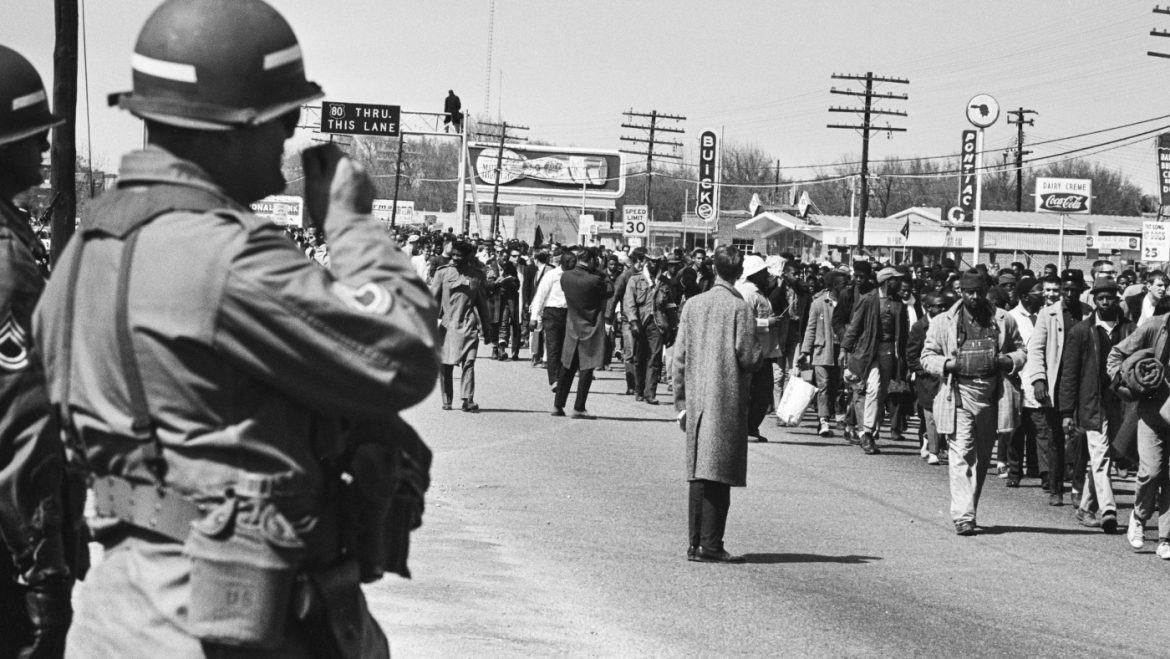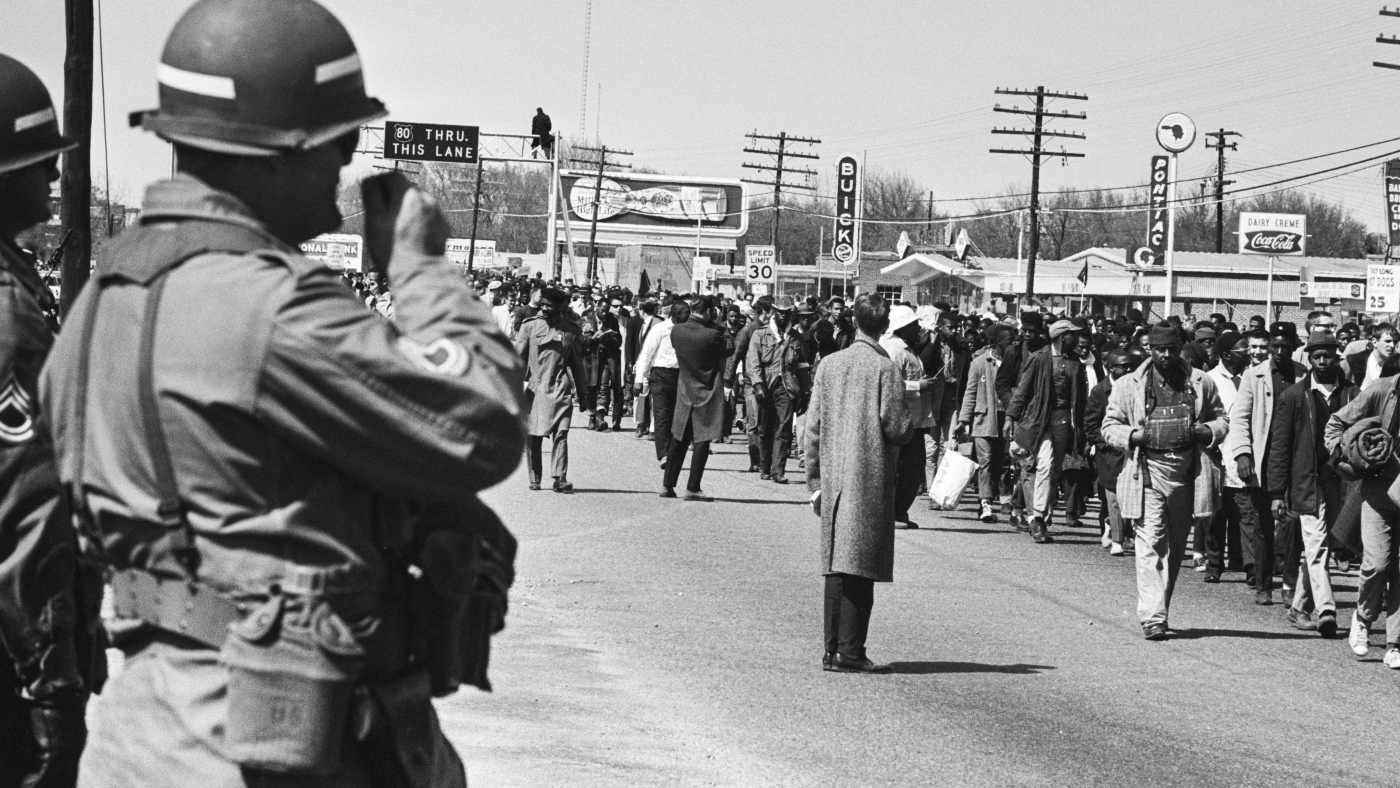The 1965 deployment of the National Guard by President Lyndon B. Johnson during the Selma to Montgomery civil rights march stands as a pivotal moment in American history. This extraordinary federal intervention not only underscored the federal government’s commitment to enforcing civil rights laws but also highlighted the tension between state and federal authority in times of social upheaval.
Context and Background: Civil Rights Struggle in Selma
By early 1965, Selma, Alabama, had become a flashpoint in the civil rights movement due to rampant racial discrimination and systematic voter suppression that disenfranchised the majority Black population. Despite the significant Black demographic, intimidation and discriminatory practices effectively barred many from voter registration and political participation. Organized marches aimed to challenge these injustices and press for federal civil rights protections.
The Crisis of Authority: State Resistance vs. Federal Power
Governor George Wallace of Alabama, a staunch segregationist, was openly hostile to the civil rights marchers. When plans advanced for a third march from Selma to Montgomery, Wallace refused to deploy the Alabama National Guard to protect the demonstrators. His public refusal, citing state financial constraints and political opposition, left the marchers vulnerable to violent attacks by local law enforcement and white supremacist mobs.
Faced with this refusal, President Johnson took a rare and decisive step: he invoked his federal authority to bypass the governor’s control of the National Guard. On March 20, 1965, Johnson notified Governor Wallace that he was federalizing the Alabama National Guard. This act placed the Guard under direct presidential command and ensured their deployment to protect the civil rights activists marching in Alabama.
Federalization of the National Guard: Legal and Political Significance
Presidents seldom override gubernatorial authority to deploy the National Guard without state cooperation. The National Guard traditionally operates under state command unless called into federal service during emergencies. Johnson’s action in 1965 was extraordinary both legally and symbolically, signaling the federal government’s readiness to enforce civil rights where states failed—or refused—to do so.
By federalizing the Guard, Johnson sent approximately 3,000 federal troops to provide security for the marchers. This military presence symbolized a commitment to civil rights and a federal repudiation of segregationist resistance. The move enabled the peaceful continuation of the march from Selma to Montgomery, which drew national attention and galvanized public support for civil rights legislation.
Impact on the Civil Rights Movement and Federal Policy
The successful protection of the Selma marchers under federal Guard control was a watershed moment, helping to shift public opinion and political momentum. The images of determined marchers accompanied by federal troops contrasted starkly with the violent repression witnessed in earlier attempts, such as “Bloody Sunday” on March 7, 1965.
This intervention contributed significantly to the passage of the Voting Rights Act of 1965, landmark legislation outlawing discriminatory voting practices. Johnson’s actions underscored the potential for federal authority to uphold constitutional rights when states abdicated their responsibility or actively sought to undermine civil liberties.
The Legacy of Johnson’s Decision
Sixty years later, Johnson’s 1965 federalization of the National Guard remains the last instance where a president directly bypassed a governor to deploy the Guard in support of civil rights. It set a precedent for federal intervention in state affairs to protect individual rights, especially when local governance was complicit in injustice.
This decisive use of federal power to enforce civil rights laws reveals the complex balance between state sovereignty and the need for national enforcement of constitutional guarantees. It also illuminates the role of leadership and courage at the highest levels of government in advancing social justice.
Conclusion: A Defining Moment of Moral and Political Resolve
President Lyndon B. Johnson’s deployment of the National Guard in 1965 was not just a military maneuver; it was a statement of moral resolve and political will. By federalizing the Guard to shield civil rights marchers in the face of state resistance, Johnson ensured that the quest for justice in America had the full backing of the federal government. This act of leadership transcended political risk, embodied a commitment to equality, and helped pave the way for transformative civil rights legislation. It remains a powerful reminder of how federal authority can and must sometimes intervene to uphold the fundamental rights of citizens when states falter.


